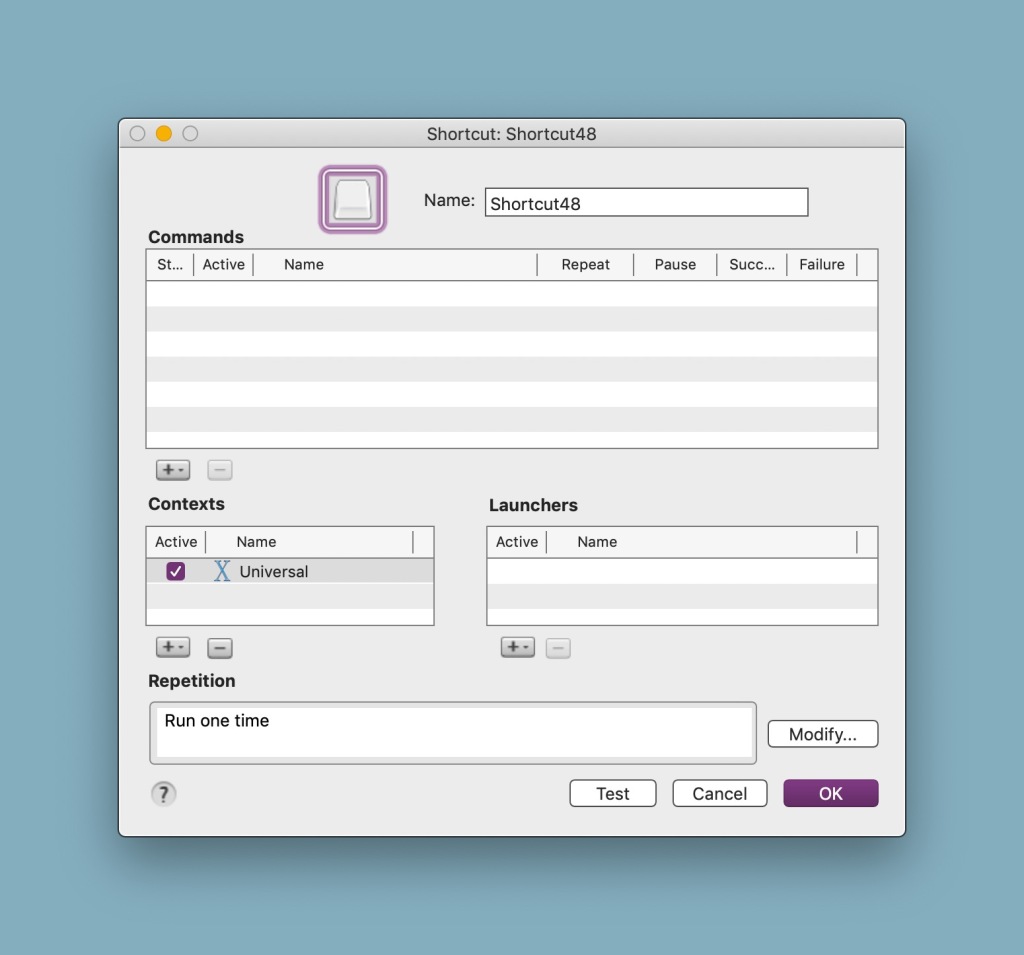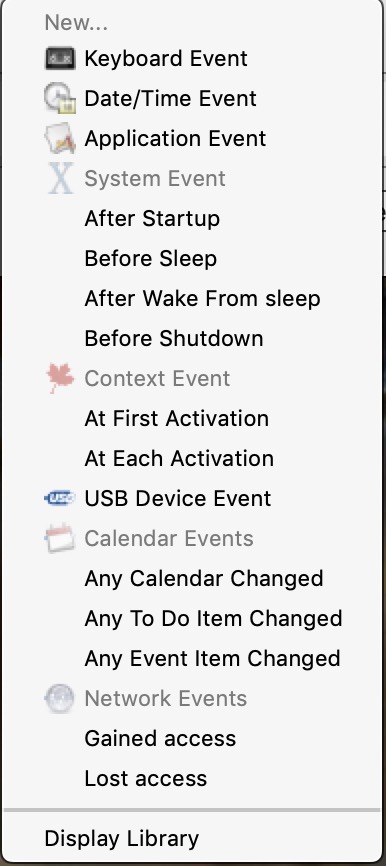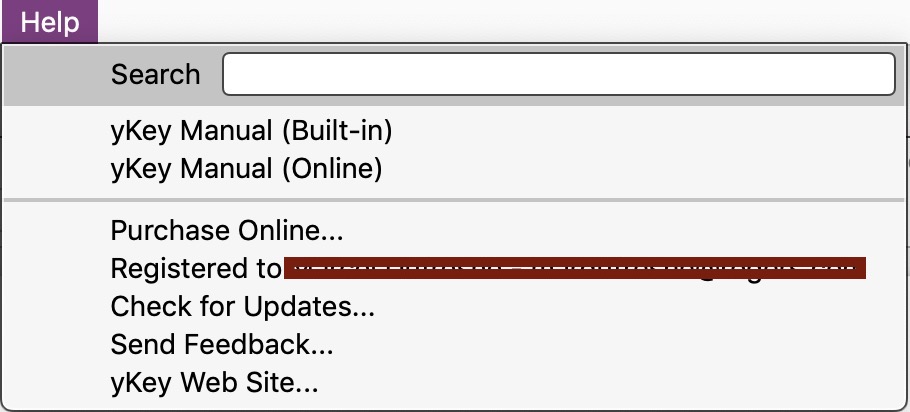by Marcel Dufresne
March 13, 2023
There are many actions and commands that we use all the time. Shortcuts help to make these go faster and us more efficient. There is another way to speed up and facilitate your day-to-day computer work. These are called macros and they have been around for quite a while. A macro is a set of commands strung together that are initiated by an activation method. As an example let me explain my morning startup macro. I have my computer wake up at 6:00 every morning. While I make my morning coffee, I have a macro set to open up a series of applications and browser windows at 6:03 am. I use Mission Control to have each of these open on a separate desktop. When I sit down with my coffee, I first see my weather information and my calendar for the day. As I scroll through desktop after desktop, I can read my updated mail, RSS feeds, sports reports, and finally my to-do list for the day. This macro runs all by itself, triggered by the 6:03 time. This is only one example of the many uses I have for macros.
My first macro application was QuickKeys which I used for many years. Unfortunately, it was unable to keep up with all the new Mac OS versions. I had to search for another macro creator. yKey is one I came across. The power of yKey comes from the many individual commands you can create and the ease with which this can be done. By stringing together commands, you can create shortcuts for many daily tasks. Because yKey’s commands are similar to actions you use to control your Mac every day, it is very easy to use.

With yKey, you can automate almost any task that you find yourself repeating, whether it’s once a week or many times each day. With yKey you can initiate a series of clicks, menu choices, typing, copies, pastes, go to a url, open a window, or go to a folder. In fact, any repetitive action or series of actions you perform on the Mac can be performed by yKey. These commands or actions are bundled into a yKey shortcut. You initiate those tasks with the press of some keys, by choosing an item from a menu, clicking a button on a palette, when your Mac’s clock ticks over to a particular time, or whenever your Mac wakes up.

There are three parts to creating a usable shortcut. These parts are Commands, Contexts and Launchers. From the main editor window, you create a new shortcut by using the ‘+’ button at the top of the window. Commands is where you add the various tasks you want yKey to perform. Choose items from the library and add as many as you want to the window. These will run one after another when activated. Next is the Contexts window where you can assign the commands created to run universally anytime you invoke them or have them work only for certain applications. For instance, my list of email addresses is needed only when Mail is running. Next comes the Launchers. There are 15 different events that can be used to activate the macro. These include pressing a user-defined combination of keys (hotkeys), a time of day, when the computer first starts up, etc. After you have set the parameters for your macro, you should name it for easy reference and also add an icon to further customize it. I suggest you make a simple shortcut (for instance starting a specific application) as your first project. Once you get the hang of how to use each of the areas in the Shortcuts window, you can press on and create more elaborate shortcuts to speed up other areas of your daily work.

Shortcuts are the core of yKey, and much of the time you’ll find yourself invoking individual shortcuts to perform your repetitive tasks. But there are two other interfaces for invoking shortcut actions: menus and palettes. A menu contains multiple shortcuts which can be in a drop-down menu from the menu bar or you can have it appear at the mouse location when the correct hotkeys are hit. Selecting an item in the menu activates its associated shortcut. Similarly, a palette displays multiple commands as buttons within a window that you can either have showing all the time or invoke only when you want it to appear. Menus and palettes are built for the most part from the same library of commands as shortcuts. You can experiment with these to see which one works best for you. I like having my four working emails in a Palette where I can choose which one to use.
Personally, I rely on the shortcuts I have created. When QuickKeys became obsolete, I desperately searched for a replacement so that I could continue using my macros. yKey is an automation utility program that creates shortcuts for accomplishing repetitive tasks. In essence, a yKey shortcut is a little program in its own right, but you don’t need to know the first thing about programming to create any yKey shortcut. All you have to do is put together three necessary parts of a shortcut: one or more commands that give the shortcut its functionality, a context in which it runs, and a launcher that defines how the shortcut is activated. yKey comes with a comprehensive manual that explains in detail all you need to know to use the application.

You can read more about this very useful application by visiting the Plum Amazing web site. Click here to read about it or download a copy. Unfortunately, yKey has nearly succumbed to the same fate as QuickKeys. The developer has stopped updating the application. It is still 100% Intel 64-bit and works for Mac 10.9 to 11.15+ but it might struggle with newer systems and computers. Download a copy of it and try it for 30 days free. It will continue to work after this time frame but limits the number of shortcuts you can have. This free download is the only way to tell if it will function on your machine. I will continue to use the application but I guess I will have to search for a newer macro creator. It is still a must-have application for me.
